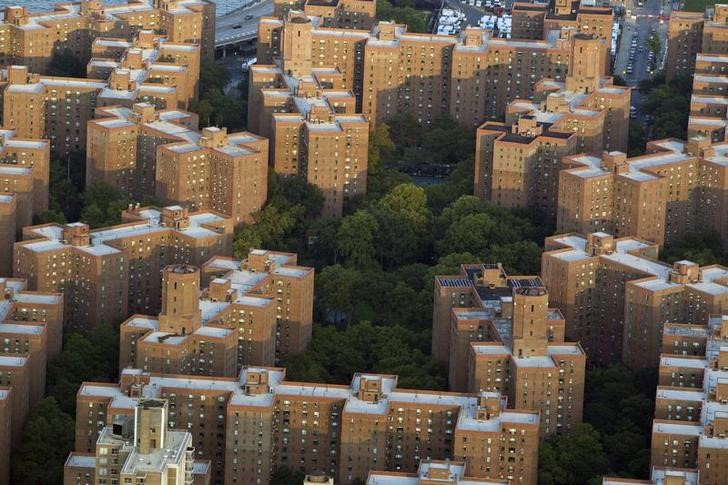By Lucia Mutikani
WASHINGTON (Reuters) - U.S. home resales fell to their lowest in a year in August as Hurricane Harvey depressed activity in Houston and a persistent shortage of properties on the market sidelined buyers.
The third straightly monthly decline in sales reported by the National Association of Realtors on Wednesday came on the heels of data on Tuesday showing a drop in homebuilding activity in August. The reports suggest housing will probably weigh on economic growth again in the third quarter.
"One of the risks out there for the broader economy is that this house of cards comes tumbling down," said Chris Rupkey, chief economist at MUFG in New York. "The housing sector is the one area of the economy that just never reached a full recovery from the recession."
Existing home sales decreased 1.7 percent to a seasonally
adjusted annual rate of 5.35 million units last month. That was the lowest level since August 2016. The NAR said Harvey, which struck Texas in the last week of August, had resulted in sales in the Houston area falling 25 percent on a year-on-year basis.
Stripping out Houston, existing home sales would have been unchanged in August, the Realtors group said. Home resales in the South tumbled 5.7 percent last month.
Harvey, and a second hurricane, Irma, which slammed Florida early this month could hurt September home sales. Texas and Florida account for more than 18 percent of existing home sales. Sales lost because of delays in closing contracts will be recouped in 2018.
The dollar rose against a basket of currencies after the Federal Reserve signaled it still expected to raise interest rates for a third time this year despite low inflation. Prices for U.S. Treasuries fell as did stocks on Wall Street.
Fed Chair Janet Yellen said though the hurricanes will hold back economic growth in the third quarter, "past experience suggested that the storms are unlikely to materially alter the course of the national economy over the medium term."
HOUSING STALLING
Even before the hurricanes struck, home sales had virtually stalled amid tight inventories that have resulted in home price increases outpacing wage gains. Sales were up 0.2 percent from August 2016. A second report on Wednesday from the Mortgage Bankers Association showed mortgage applications fell last week
"As we continue to process the third-quarter housing data, we are gaining confidence in our view that real residential investment will fall during the quarter," said Daniel Silver, an economist at JPMorgan (NYSE:JPM) in New York.
Housing subtracted 0.26 percentage point from gross domestic product growth in the second quarter.
Builders have blamed shortages of labor and land as well as higher costs of building materials for their inability to ramp up construction. Economists and builders say Harvey and Irma could worsen the housing shortage as scarce labor is pulled toward the rebuilding effort and materials are bid higher.
A report on Tuesday showed housing completions tumbling to a 10-month low in August. At the same time single-family home permits fell to a three-month low. These developments suggest housing inventory will remain troublesome for a while.
The NAR said the number of homes on the market fell 2.1 percent to 1.88 million units in August. Supply was down 6.5 percent from a year ago. Housing inventory has dropped for 27 straight months on a year-on-year basis.
As a result, the median house price increased 5.6 percent from a year ago to $253,500 in August. That was the 66th consecutive month of year-on-year price gains. Annual wage growth has not exceed 2.5 percent this year.
Underscoring the strong demand for houses, homes sold in August typically stayed on the market for 30 days. That compared to 36 days a year ago.
High house prices as a result of tight inventories are sidelining first-time homebuyers. In August, first-time buyers accounted for 31 percent of transactions, well below the 40 percent share that economists and realtors say is needed for a robust housing market.
August's share of first-time homebuyers was the smallest in a year and was down from 33 percent in July.

(For a graphic, click http://fingfx.thomsonreuters.com/gfx/rngs/1/1528/2521/index.html)